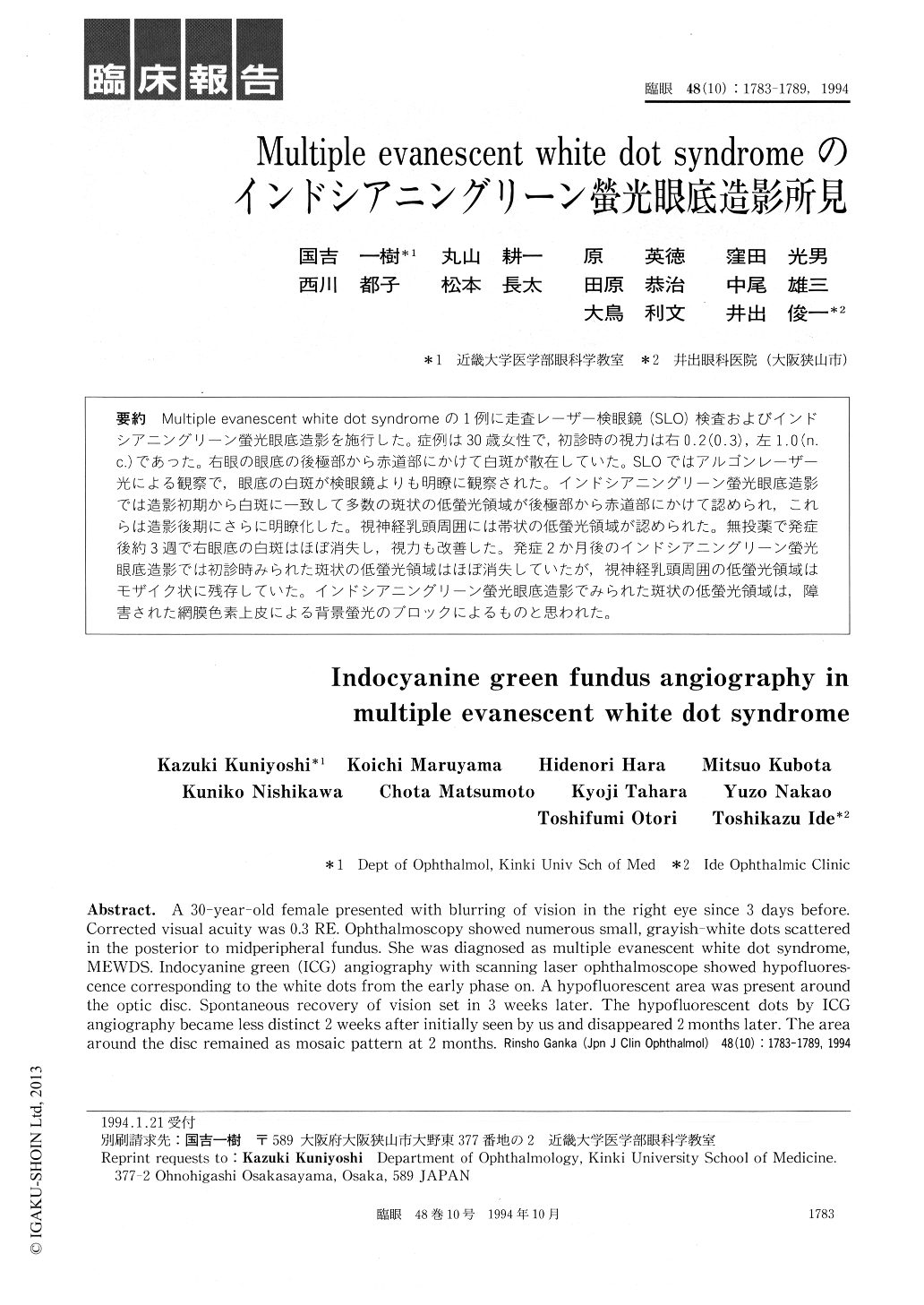Japanese
English
- 有料閲覧
- Abstract 文献概要
- 1ページ目 Look Inside
Multiple evanescent white dot syndromeの1例に走査レーザー検眼鏡(SLO)検査およびインドシアニングリーン螢光眼底造影を施行した。症例は30歳女性で,初診時の視力は右0.2(0.3),左1.0(n.c.)であった。右眼の眼底の後極部から赤道部にかけて白斑が散在していた。SLOではアルゴンレーザー光による観察で,眼底の白斑が検眼鏡よりも明瞭に観察された。インドシアニングリーン螢光眼底造影では造影初期から白斑に一致して多数の斑状の低螢光領域が後極部から赤道部にかけて認められ,これらは造影後期にさらに明瞭化した。視神経乳頭周囲には帯状の低螢光領域が認められた。無投薬で発症後約3週で右眼底の白斑はほぼ消失し,視力も改善した。発症2か月後のインドシアニングリーン螢光眼底造影では初診時みられた斑状の低螢光領域はほぼ消失していたが,視神経乳頭周囲の低螢光領域はモザイク状に残存していた。インドシアニングリーン螢光眼底造影でみられた斑状の低螢光領域は,障害された網膜色素上皮による背景螢光のブロックによるものと思われた。
A 30-year-old female presented with blurring of vision in the right eye since 3 days before. Corrected visual acuity was 0.3RE. Ophthalmoscopy showed numerous small, grayish-white dots scattered in the posterior to midperipheral fundus. She was diagnosed as multiple evanescent white dot syndrome, MEWDS. Indocyanine green (ICG) angiography with scanning laser ophthalmoscope showed hypofluores-cence corresponding to the white dots from the early phase on. A hypofluorescent area was present around the optic disc. Spontaneous recovery of vision set in 3 weeks later. The hypofluorescent dots by ICG angiography became less distinct 2 weeks after initially seen by us and disappeared 2 months later. The area around the disc remained as mosaic pattern at 2 months.

Copyright © 1994, Igaku-Shoin Ltd. All rights reserved.


